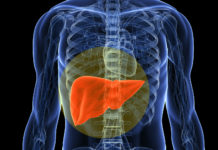
Time was when the umbrella in the old Raj Kapoor hit ‘Pyaar Hua Ikrar Hua’ was used to market ‘NIRODH’ – possibly the first condom brand known to India. Years later while Bollywood has progressed from sarees to mini skirts and from flowers brushing against each other to real onscreen kisses, condoms find themselves pushed back to the euphemistic umbrella phase.

Exactly ten days after it banned condom ads on television between 6 am and 10 pm on the ground that they are unfit for children to view, the Union ministry of information and broadcasting on Thursday came out with a clarification that the ban pertains only to ads with sexually explicit content. As the debate about condoms lingers on, Medibulletin analyses the hard facts.
According to the National family Health Survey 4 (2015-16 data), there is a close to 13% unmet contraceptive need in India and condom usage accounts for just 5.6% of contraception used in the country. This is an increase of less than 10% when compared to 2005- 06 survey. The average global increase in condom usage between 1994 and 2015 was 50% as per data compiled by the population division of United Nations Department of Economic and Social Affairs.
While modern methods including injectable contraceptives and condoms constitute most contraceptive use around the world, the most common method in India is female sterilisation at 36%; male sterilisation is a dismal 0.3% even though it is a far easier and safer procedure than tubectomy or the blocking of the fallopian tubes of a woman so that eggs do not travel to the uterus from the ovary thereby preventing pregnancy. According to World Health Organisation, condoms are 98% effective in preventing pregnancy if used properly and they have no side effects.
India has been grappling with a massive population burden and its associated health implications for a long time now and has tried everything to bring it down – from forced sterilisations during Emergency to setting sterilisation targets for health workers. The current total fertility rate (TFR) in the country is 2.1(down from 2.7 in 2005-06) but there are wide variations between states. In Uttar Pradesh it is 2.7 as per NFHS 4 and in Kerala it is 1.6. TFR is defined as the total number of children born or likely to be born to a woman in her lifetime if at the prevailing rate of age-specific fertility in the population. At 2.1 a population is believed to just replace itself – that is achieve stability.
India really needs more condom ads, not less. And kids need to see them more than adults
India will overtake China’s expected population of 1.4 billion by 2022 as per the 2015 revision report of the population division of the United Nations.Thereafter, the report said, India’s population will grow to 1.5 billion in 2030 and 1.7 billion in 2050 while China’s population is expected to remain fairly constant until the 2030s, when it is expected to decrease slightly. Ban on condom ads is a direct contraindication to the population control policy of the government.
What is perhaps more alarming is that use of family planning methods in married women aged 15-49 years has gone down from 56.5% in 2005- 2006 to 53.5% in 2015- 2016 according to NFHS. With 8% of women aged 15-19 years already married or pregnant at the time of the NFHS-4 survey and two in three Indian women with less than 10 or more years of schooling, in a rational universe, government efforts should focus on promotion of an inexpensive and effective contraceptive method like condoms rather than imposing a curfew.
Condoms incidentally are the only contraceptives that protect against both unwanted pregnancy and sexually transmitted diseases (STDs). India is the third biggest hub of HIV/AIDS patients in the world but only one in five women and one in three men have comprehensive knowledge that consistent use of condoms every time they have sex and having just one uninfected faithful sex partner can significantly reduce the chances of getting HIV/AIDS.
According to American Academy of Paediatrics, condoms remains the most popularly used contraceptive among adolescents. Adolescents are at the most risk of sexually transmitted diseases (STDs) including HIV. In 2011, 25% of the 15-24 years old in the US acquired nearly half of all new STDs including infection with Neisseria gonorrhoeae, Chlamydia Trachomatis, Trichomonas vaginalis, Herpes simplex virus-2 and Human papilloma virus (causing cervical cancer). HIV infection accounted for nearly 20% all new infections in USA in 2011 in adolescents.
While India lacks any adolescents data, condoms could actually be a healthy way to start a conversation about safe sex. Teenage pregnancy and unsafe abortions (actual data is usually not reported) are one of many reasons for India’s high Maternal Mortality Ratio, Infant Mortality Rate and Under Five Mortality Rate. With the easy availability of many types of sexual content including pornography on the internet, safe sex education is more important than ever.
India really needs more condom ads, not less. And kids need to see them more than adults.













